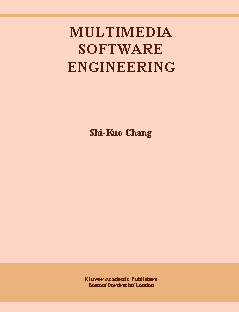
Textbook: Shi-Kuo Chang, Multimedia Software Engineering, Kluwer Academic Publishers, 2000. A sample chapter in pdf format is at www.cs.pittt.edu/~chang/231/c01.pdf.
Prerequisites: CS1530/1631 or understanding of general principles of software engineering; C/C++ programming; Web programming.
Course Structure:
(Part I) (First eight weeks) The instructor will present a framework of multimedia software engineering based upon a theory of multidimensional languages. Four exercises (32%) will be given. The first exercise is on paper only and sometimes it is a mini-essay (exercises change from year to year). The second and third exercises are programming exercises that require the use of c/c++/Java, TAOML, IC_compiler, IC_manager, etc. developed by the instructor's research group, constituting the components of MICE (multimedia information custom engineering) environment.
Midterm Exam: The midterm exam (20%) covers the essence of the theory, as well as relevant aspects of the experimental MICE environment. Please read grading policy for exams, projects and assignments.
(Part II) (Second five weeks) In the introduction to Part I the instructor has presented a general survey on the current research in multimedia software engineering. Each student will then study one or several related papers to present one aspect of multimedia software engineering in class (10%). The presentation is intended to stimulate discussions and will lead to a project formulation assignment (8%) designed to motivate the students to explore various issues in multimedia software engineering. (Sometimes this is replaced by a project milestone if the nature of the project is cleaer.)
(Part III) (Final two weeks) Each student will do a term project (30%). In lieu of classroom lectures sometimes there will be one-on-one discussions on projects, or small-group teleconferences provided that our teleconferencing system is working by that time. Individual meetings, teleconferences and classroom lectures will be scheduled by e-mail.
On-line interactions: In addition to classroom lectures, this course will emphasize on-line interactions. In fact, the instructor hopes to offer this course (and other courses) by distance learning in the future. Therefore, on-line interactions will be an important, necessary component of this course. The course materials, announcements and exercises will all be available from the Internet. Impromptu meetings and schedule changes will be announced by e-mail. Therefore, the first thing a student should do is to register online.
Bulletin Board: Use it to communicate with your instructor, your classmates or to post a message to all.
Virtual Classroom can be found at: http://www.cs.pitt.edu/~flying/VC/student.htm. A link to user manual is also offered there.
Project Discussion: Standard interface for the Virtual Classroom
Multimedia Software Engineering Life Cycle
Midterm Week-8-Lec-2 (See Calendar).
CVS, Maven, CruiseControl, Bugzilla Debugger Tutorial (final report on VC Teacher Tool)
seminar on http://www.cs.pitt.edu/~chang/231/server/doc/ (final report on VC Teacher Tool)
SCORM (final report on VC Teacher Tool)
XML Soap Programmer tools and development (final report on VC Image Server for FaceAlive Icons)
Java for limited devices (final report on VC client for limited devices)
Migrating to J# (final report on VC client for CE)
indexing techniques (final report on VC Student Tool with Indexing)
mining and indexing techniques (final report on VC Indexing and Searching)
knowledge management and yellow pages for expertise, user profile paper (final report on VC Student Tool with Yellow Pages)
service oriented architecture, ActiveMQ (final report on VC Message Server)
XML servers (final report on Remote Control and VC Message Server)
Labview visual programming (final report on VC Indexing and Searching using Labview)
heuristic algorithm for time scheduling (final report on Nurse Scheduling)
literature on negotiations (final report on Formal Model for Negotiation Protocols and paper)
literature on negotiation protocols (final report on Patterns for Negotiation Protocols and paper)
design patterns using Java (project presentation and final report on Patterns for Bidding Negotiations)
network security for VC (final report on VC Student Tool with XML)
Project Milestone #1 (8%) is due on Week-12-Lec-2 (See Calendar).
